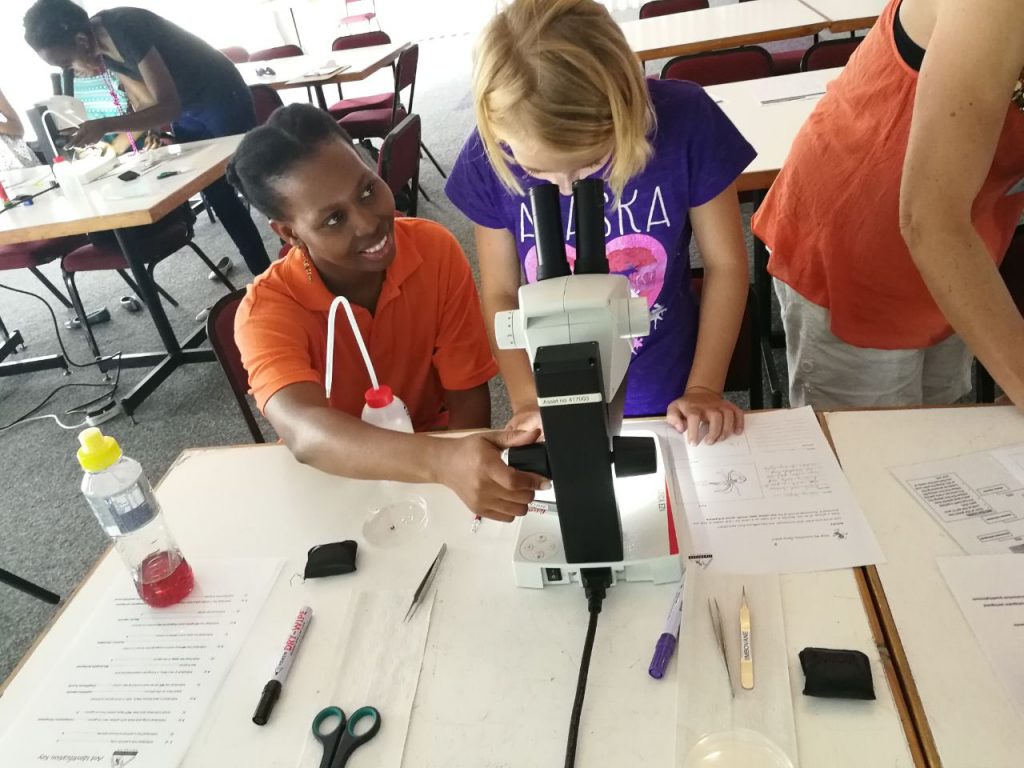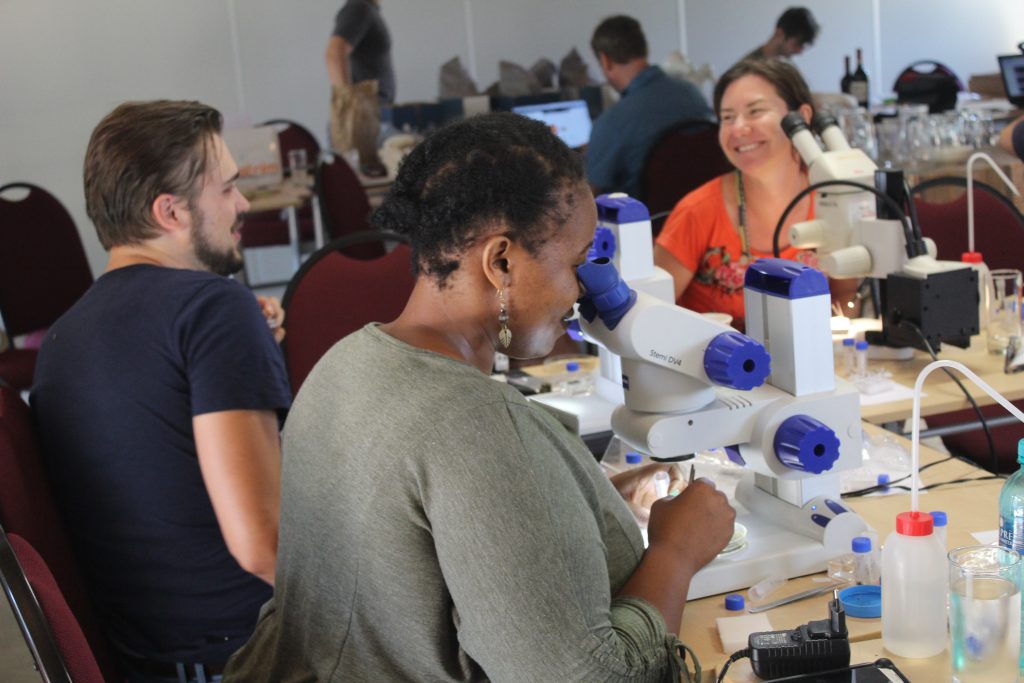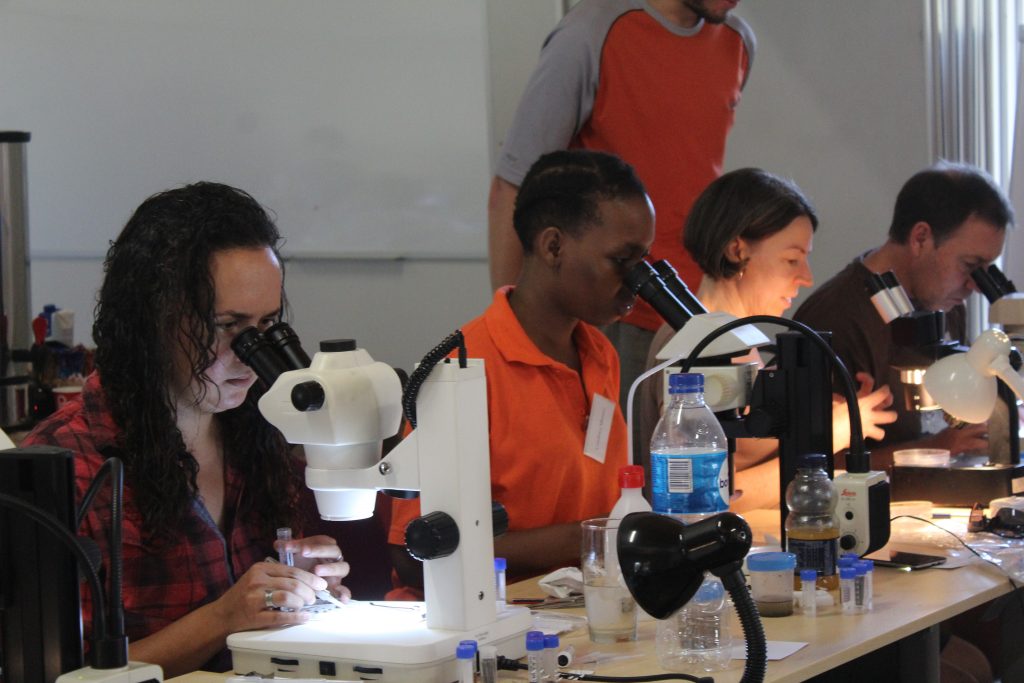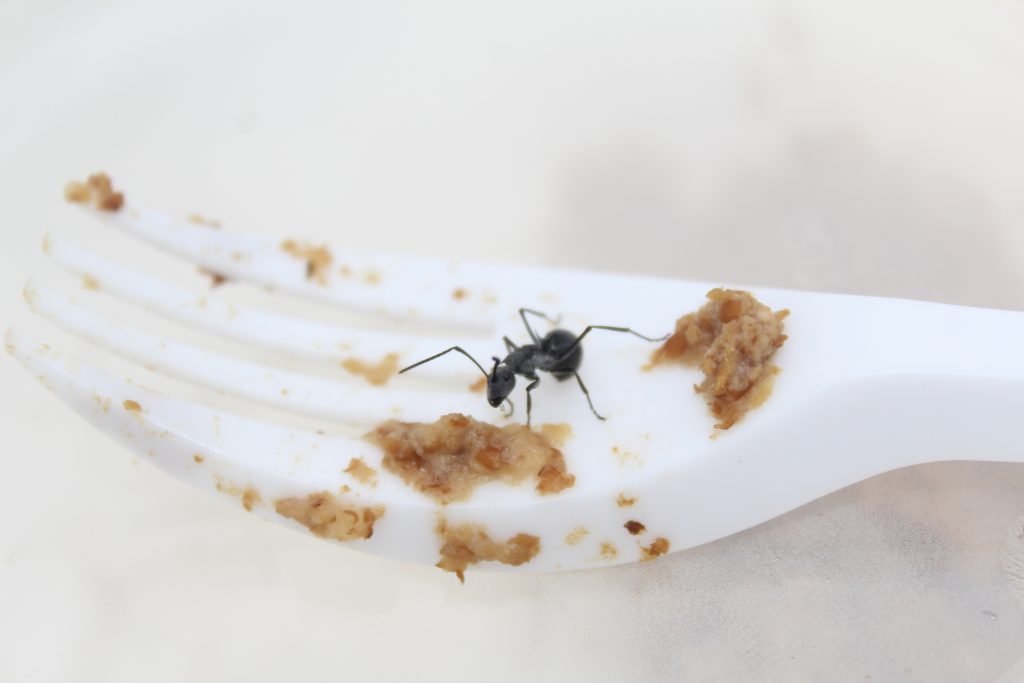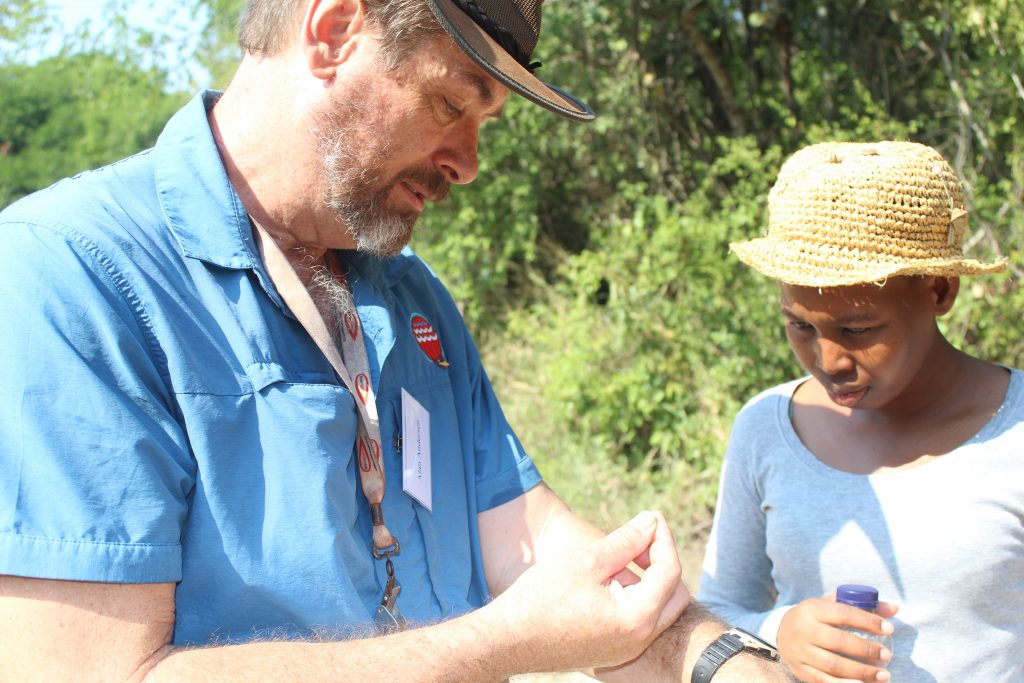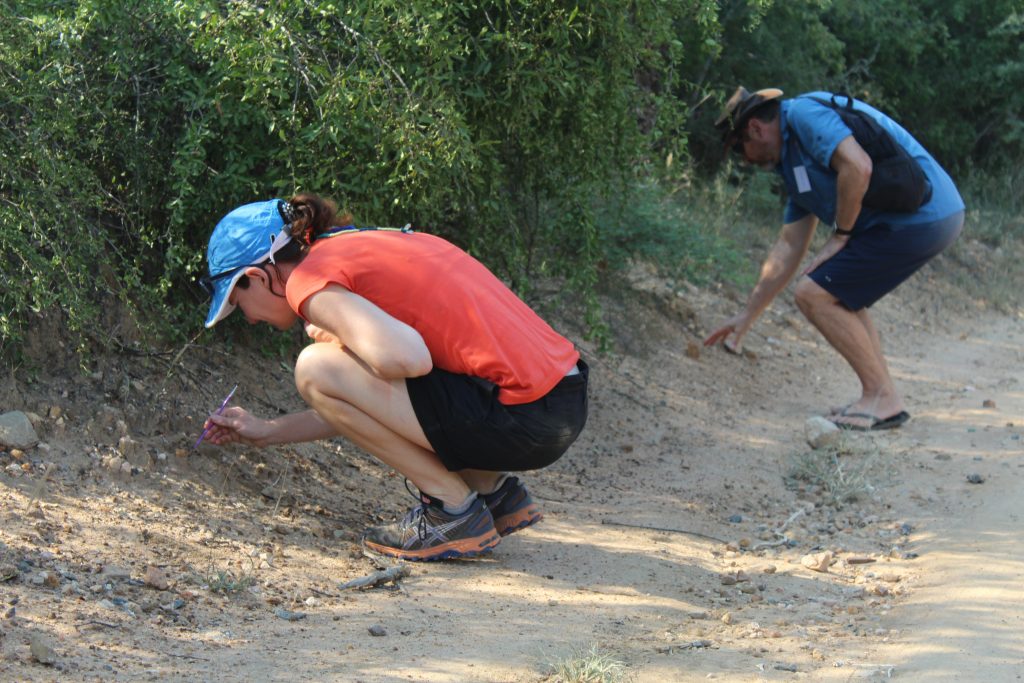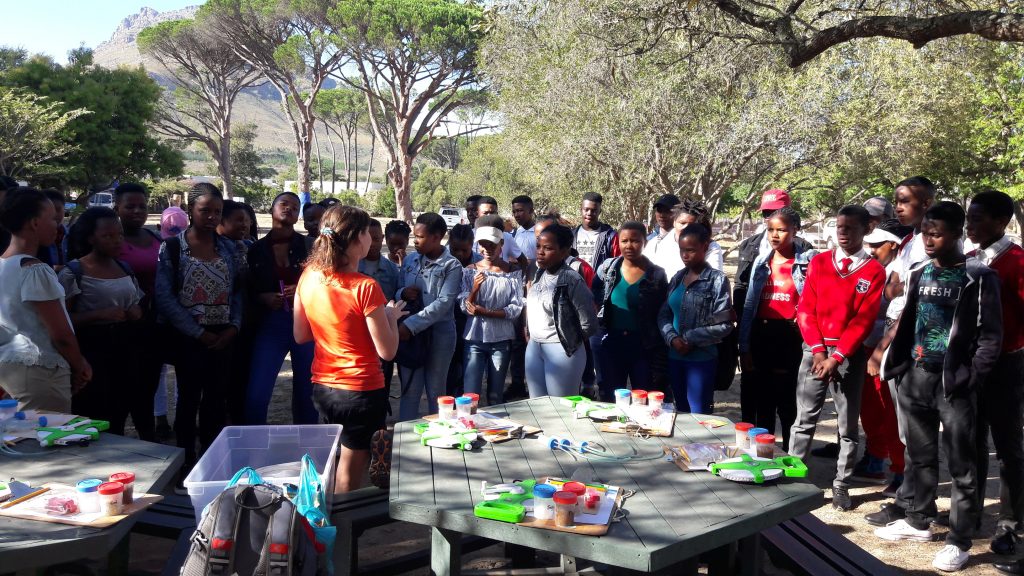The month of March was an exciting time for the Iimbovane team, filled with outreach activities, school visits and capacity building. Here below are some of the highlights.
School visits
Early March saw the beginning of Iimbovane’s biannual school visits, where we work with the Gr. 10 Life Sciences learners. On these school visits, we introduced the concept of biodiversity and species richness, then took the class out onto their school grounds to plant pitfalls and actively catch ants in vials with paintbrushes. The purpose of this is to introduce learners to the fieldwork component of biodiversity science.
Watch this space…if we have not visited your school yet, expect us soon!
SciFest Africa
SciFest Africa took place in Grahamstown from the 6-13th March. Here, the Iimbovane team pulled out all the stops to create fun and interactive workshop sessions. We held six workshops over the span of three days. Each workshop was tailored for the age group that attended. Children participating in the workshops ranged in age between 7 and 18.
Titled “Magnific-ANT life below ground!”, the aim of the workshop was to introduce attendees to ants and their fascinating ecology in the hope of inspiring them to appreciate the smaller, often overlooked lifeforms. With a younger audience, we focused on ant diversity, and showed the magnificent variety of ants through microscopes. The older audiences received basic taxonomic skills, and learnt how to use a microscope as well how to interpret a simplified dichotomous key to identify an ant. Ntsiki Langa, the recruitment and marketer for Stellenbosch University’s Science Faculty attended the festival with us, and provided career advice to the older learners, on admission requirements and courses offered in the sciences at Stellenbosch University.
Feedback was generous and positive and we look forward to attending again next year.
Ant Course (11-16 March)
A big highlight for the Iimbovane team this year was the opportunity to attend the first ever Ant Identification Couse held at Wits Rural Centre, Hoedspruit, Limpopo.
A team of international scientists lead us through an intense week of ant-ing. Each facilitator is from a different university, but had collaborated at some point. Professor Kate Parr is from University of Liverpool, England; Professor Alan Anderson is from Charles Darwin University, Australia; and Dr Tom Bishop, is completing a postdoctoral research position in conjunction with the Centre for Invasion Biology and the University of Pretoria.
The course covered everything from the various methods of catching ants, and choosing the correct method for your research question, to mounting ants for reference collections and how to use an ant key for basic identification. The days were well-balanced with time in the field collecting ants, lectures and lab work. Each facilitator gave insightful talks about general ant ecology, as well as about their own research. It was fascinating to see the variety of avenues one could explore using ants. It was an incredible privilege for us to be able to go out in the field with these world leaders and garner tips and tricks of the trade, witnessing their skills first-hand.
Both novices and professionals enrolled in the course, including backgrounds in research, industry and reserve management. This was great as we could all learn from each other. The course was structured in such a way to account for high variance in the participant’s knowledge-base and experience. Stellenbosch University was well represented, with 6 of the 16 participants being affiliated with Stellenbosch University’s Botany and Zoology Department.
The week was well organised and presented, and provided valuable information for the Iimbovane team. We have since begun integrating new ideas from this workshop into our activities.
One-day biodiversity blast!
On the 23 March, the Grade 10 Life Sciences students from Umyezo Wama Apile, in Grabouw, joined us for a biodiversity workshop in Stellenbosch. The day began at JS Marais Nature reserve, where we introduced concepts around biodiversity to the learners. We then set out four grids of various baits to monitor ant activity very fifteen minutes for an hour. The idea was to see what type of ants were in the area, and which food they preferred as well as if there were any interactions, such as competition, between ant species. We also showed the learners how to collect ants using a vial and paintbrush. We then took the learners and their samples to a biology lab at Stellenbosch University, where we taught them how to use a microscope and basic ant identification. This day provided skills and insights that supplement biodiversity lessons done in the classroom.
To see more photos of our activities, check out our Facebook page: https://www.facebook.com/IimbovaneOutreachProject/

